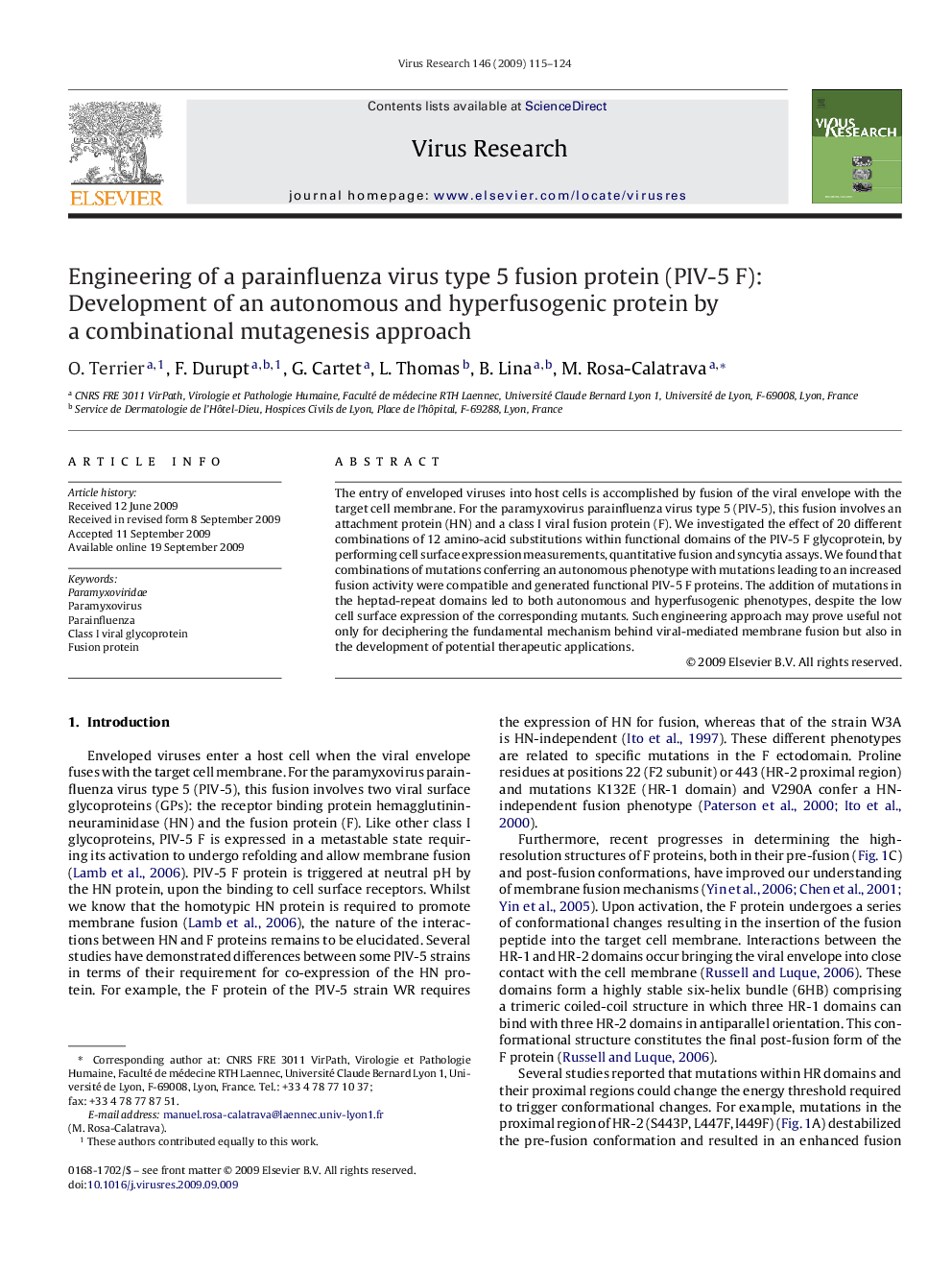| Article ID | Journal | Published Year | Pages | File Type |
|---|---|---|---|---|
| 3429564 | Virus Research | 2009 | 10 Pages |
The entry of enveloped viruses into host cells is accomplished by fusion of the viral envelope with the target cell membrane. For the paramyxovirus parainfluenza virus type 5 (PIV-5), this fusion involves an attachment protein (HN) and a class I viral fusion protein (F). We investigated the effect of 20 different combinations of 12 amino-acid substitutions within functional domains of the PIV-5 F glycoprotein, by performing cell surface expression measurements, quantitative fusion and syncytia assays. We found that combinations of mutations conferring an autonomous phenotype with mutations leading to an increased fusion activity were compatible and generated functional PIV-5 F proteins. The addition of mutations in the heptad-repeat domains led to both autonomous and hyperfusogenic phenotypes, despite the low cell surface expression of the corresponding mutants. Such engineering approach may prove useful not only for deciphering the fundamental mechanism behind viral-mediated membrane fusion but also in the development of potential therapeutic applications.
